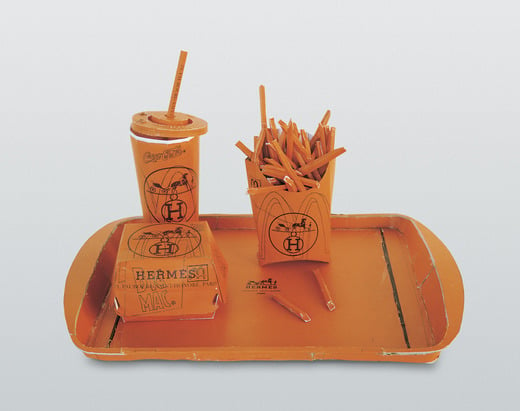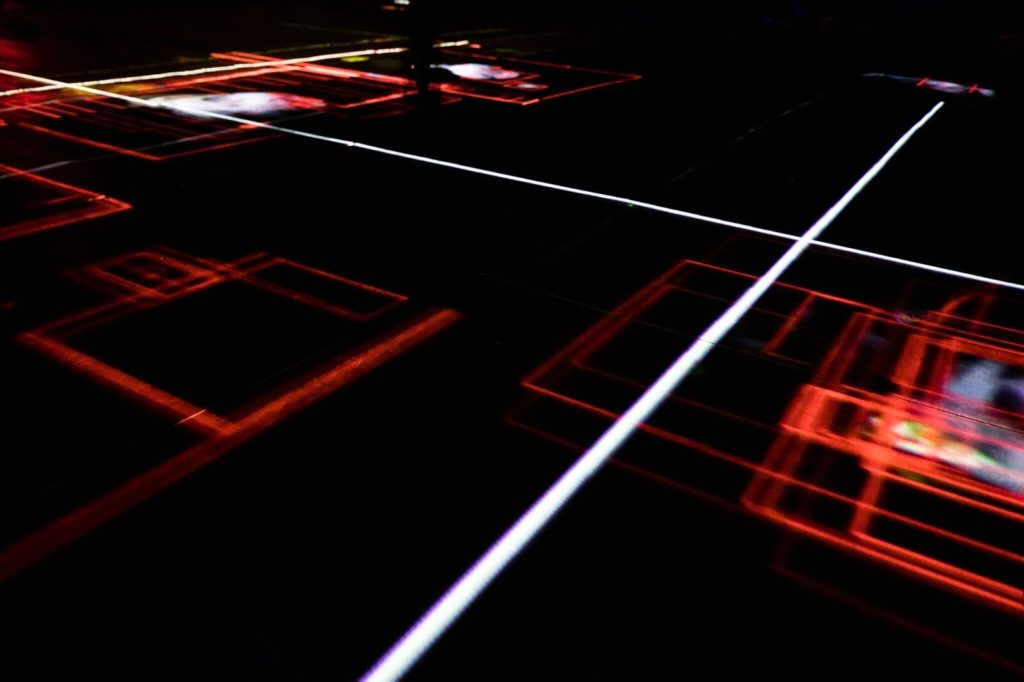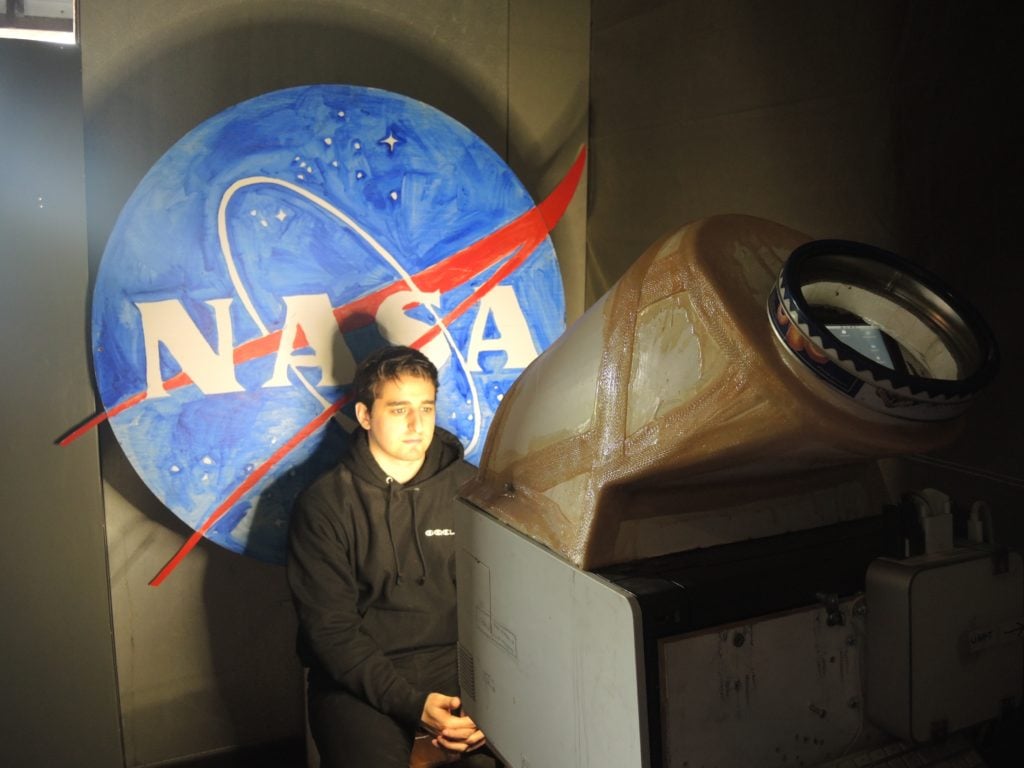Analysis
The Gray Market: Why Artists Should Think Twice Before ‘Satirizing’ Brands (And Other Insights)
This week, our columnist assesses the merits and misfires of immersive installations.

This week, our columnist assesses the merits and misfires of immersive installations.

Tim Schneider

Every Monday morning, artnet News brings you The Gray Market. The column decodes important stories from the previous week—and offers unparalleled insight into the inner workings of the art industry in the process.
This week, we’re assessing the merits and misfires of immersive installations…
AI IN THE SKY: On Wednesday the Park Avenue Armory debuted the latest in its ongoing series of collaborations with premier names in art and architecture. Titled “Hansel & Gretel,” the project reunites Ai Weiwei, Jacques Herzog, and Pierre de Meuron, the troika best known for masterminding Beijing’s “Bird’s Nest” National Stadium for the 2008 Olympics. Their Armory installation combines drones, infrared cameras, facial-recognition software, and a grab-bag of 2017 buzzwords to tackle the issue of—you guessed it—surveillance. (Which, as an aside, I think we need more artists focusing on right now the same way we need more washed-up senators inexplicably exhuming the corpse of Hillary’s email server seven months after the election, but I digress…)
Let’s get down to business here, because business is what this post—and this exhibition—are ultimately about. Despite the curatorial statement‘s description of “Hansel & Gretel” as a source of “psychological menace” and “an unnerving experience of what it means to be constantly watched,” what seems clear from every firsthand account of the show I’ve found is this: Whatever its creators’ intentions may have been, visitors are mostly treating “Hansel & Gretel” as Manhattan’s newest and most fertile crescent for harvesting lighthearted selfies. I can only hope I’ll be in New York near the closing date to check their prevalence on the dating apps…

Mockup of installation detail of “Hansel & Gretel” at Park Avenue Armory. Photo by James Ewing.
Meanwhile, among other items offered in the Armory’s gift shop during the show’s run—because what laser-targets the black heart of a supposedly monstrous sociopolitical dilemma better than wall-to-wall merch?—is “a line of surveillance-skirting products,” according to Roberta Smith. Remember, no matter how many free encryption or data-obfuscation tools exist, you’re not really serious about this issue until you’re buying shit.
All of which leads us back to what I believe to be the fundamental disconnect within “Hansel & Gretel.” Ai, Herzog, and de Meuron may sincerely want to jolt viewers awake to the dystopian potential of a contemporary global surveillance state. But to make that point in the Park Avenue Armory, they also need viewers to buy tickets, at $15 a pop. In that sense, nothing could be more counterproductive than mercilessly harrowing customers with tech like an eyes-clamped-open Alex in A Clockwork Orange.
So it shouldn’t be a surprise that, in Smith’s summation, “Hansel & Gretel” and its venue “[aim] ambitiously, and at great expense, for participatory public art but [settle] instead for public entertainment.” And it shouldn’t take 24/7 surveillance of the contemporary-art landscape for us to anticipate that, when outreach to a broad audience becomes any project or institution’s business plan circa 2017, the featured work is likely to start feeling a lot more like featured play. [The New York Times]

Tom Sachs, NIKECraft Mars 2.0. Courtesy of Nike.
LIFE ON MARS: Elsewhere in the Empire City, after a five-year development process, sculptor and blue-chip brand-satirist Tom Sachs unleashed his second collaboration with global apparel colossus Nike. But while the centerpiece is another limited-edition sneaker, the Mars Yard 2.0, the artist has embedded it inside what he bills as an immersive and physically/mentally taxing alternative to the passive, interminable waiting-line purgatory that defines part of contemporary sneakerhead culture, as well as contemporary consumerism more broadly.
As my colleague Sarah Cascone writes, Sachs’s “Space Camp,” the by-reservation-only installation filling the Mars Yard pop-up store on Governors Island, puts participants through a 40-minute short film called The Hero’s Journey, then asks them to “complete a lengthy, art-filled obstacle course that tests both mind and body.” The prize at the end of these modern labors of Hercules? Your very own pair of Mars Yard 2.0’s, of course.
But that’s not quite the point, according to Sachs. Instead, integral to “Space Camp” is the prospect that completing these trials will help thrust misguided, hype-chasing buyers into the cold, humanistic reality that collecting sneakers is a waste of time—at least, per his remarks to Vanity Fair before the project’s launch. The box even reads (emphasis Sachs’s), “These shoes are only valid if worn, and worn to death by you.” What else could a professional skeptic like me possibly need to be convinced that the project exists to lampoon empty buying and selling rather than encourage it?!
Look, I get it. Repurposing capitalist brands to critique capitalist brands is… well, much of Sachs’s brand. The work purports to be substantive, even subversive, because it’s satirical.
The only problem is that, based on both peer-reviewed research and anecdotal evidence by lifelong political comics, satire doesn’t really work. In fact, the grand irony is that most of the genre has a disturbing tendency to normalize, humanize, and/or trivialize its intended target into a position of even greater strength.

“Tom Sachs: Space Camp” installation view. Courtesy of Sarah Cascone.
Malcolm Gladwell covered this paradox at length last year in the first-season finale of his podcast, Revisionist History. From British comic Harry Enfield’s hyper-Thatcherite caricature Loadsamoney to Tina Fey’s “I can see Russia from my house” spoof of Sarah Palin to, yes, Alec Baldwin’s now-ubiquitous sendup of Donald Trump, entertainment value tends to defuse and dissipate outrage. As Jonathan Coe puts it in the essay linked in the previous paragraph, “Laughter is not just ineffectual as protest… it actually replaces protest.”
According to Gladwell, there is one exception to this rule: satire so viciously hard-edged and committed to the message that it never allows the tension to release—like, say, when Israeli TV’s parodic Eretz Nehederet got kindergarteners to mimic hard-line talking points about genocide and worldwide anti-Semitism. (Teacher: “So what do we tell the world?” Schoolkids: “Don’t preach us morals! There won’t be another Auschwitz!”) There are no belly laughs to let the viewer off the hook.
Granted, Sachs isn’t trying to be a comedian per se. But his bio proudly proclaims that one of the defining themes of his practice is “sampling capitalist culture, remixing, dubbing, and spitting it back out again, so that the results are transformed and transforming.” If that’s not a definition for consumer satire, especially in the context of Sachs’s alleged disdain for sneakerhead behavior standards, I don’t know what is. So it’s only fair to ask whether “Space Camp,” or much, if any, of his other work truly completes the mission.
Speaking only for myself, the answer is a “no” forceful enough to crack asteroids. If you’re an artist who really wants to drop a blade on conspicuous consumption’s neck, I think there’s a better way to do it than taking a mega-brand’s money—multiple times—to stock their shelves with highly exclusive merchandise. Package the main event in whatever aesthetics or rhetoric you want. It’s still a conceptual and ethical black hole. [artnet News]

Courtesy Peabody Essex Museum
ESSEXUAL HEALING: Finally this week, Salem, Massachusetts’s Peabody Essex Museum announced an unusual hire that I expect to trigger more than a little exasperation around the industry. For the next year, neuroscientist Dr. Tedi Asher will ply her trade on site to “develop ways to enhance the quality and impact of people’s experience of art,” according to the Peabody’s director and CEO. More specifically, Asher’s task will be to combat the pressure of the attention economy by, in the words of The Art Newspaper‘s Daniel Grant, teaming “with curators and designers at the museum to help visitors focus on fewer works at a time.”
While it sounds like there are no definite methods in place yet for achieving this goal, a few possibilities tossed out in Grant’s piece include creating curtained-off spaces for individual works in larger galleries, so that distractions can be minimized for viewers; using software to monitor visitors’ eye movements, so that the Peabody can fine-tune wall text to address its collection’s most-frequently-examined aspects; and taking an “immersive, multi-sensory approach to contextualizing the galleries, such as incorporating background music from the period that works were made and even scenting the galleries with spices from their countries of origin,” so that the stuffy traditionalism of museum viewership grows into a new sensory richness.

Neuroscientist Dr. Tedi Asher. Courtesy Peabody Essex Museum.
It was in reading these hypotheticals that I could hear a legion of art purists crying out with the same righteous fury as every metropolitan couple on Earth simultaneously learning of a worldwide brunch famine. Who could possibly think it’s a good idea to make viewing an artwork feel more like sequestering ourselves inside a voting booth? Does the Peabody really believe incrementally better-worded placards would be worth the practical and psychic costs of transforming the museum into a nonprofit surveillance state? And who in their right mind would propose limiting in-gallery distractions by adding mood music and Smell-o-vision?
Before we all start screaming “Gimmickry!” with the hammy abandon of Nic Cage in a helmet full of bees, however, let’s consider two points. First, museums have been back-alley knife-fighting the problem of visitor engagement since at least the mid-19th century. Despite that many of us tend to think of the white-cube museum as a given throughout human history, the model only gained widespread acceptance in about the last 100 years. So let’s not treat Asher and the Peabody as if experimenting with a few unorthodox institutional tweaks automatically runs as counter to the laws of nature as gene-hacking livestock to glow in the dark.
Second, and perhaps even more important, consider the museum’s circumstances in the context of the two superstar-driven, sensory-overloading installations that I just wrote about before Asher’s hire. When some of the biggest, boldest names in contemporary art develop the type of priapic hard-on for spectacle and interactivity now bulging through Ai’s “Hansel & Gretel” and Sachs’s “Space Camp,” how fair is it to bludgeon a modest New England institution in an aggressively consolidating industry for trying to build something that registers in a fuller way than typical museum-world monasticism?
Personally, I think the more enlightened perspective is to recognize that art is change—or at least should be, if it’s doing its job. Yet if we enthusiasts and insiders instead demand that the general public bends to a set of rigid expectations rather than considering how the larger world is shifting around us, then museums may not have to battle outside distractions for much longer. They’ll BECOME outside distractions.
That doesn’t mean every exhibition has to prioritize selfies, sneakers, and obstacle courses above more substantive engagement. But it does mean that, before attacking would-be reformers, institutional critics should keep in mind the words of retired US Army general Eric Shinseki: If you don’t like change, you’re going to like irrelevance even less. [The Art Newspaper]
That’s all for this edition. Til next time, remember: The shiny new thing isn’t always an improvement, but the one you have already won’t last forever, either.
You can read The Gray Market’s full archive, as well as the latest posts, here.